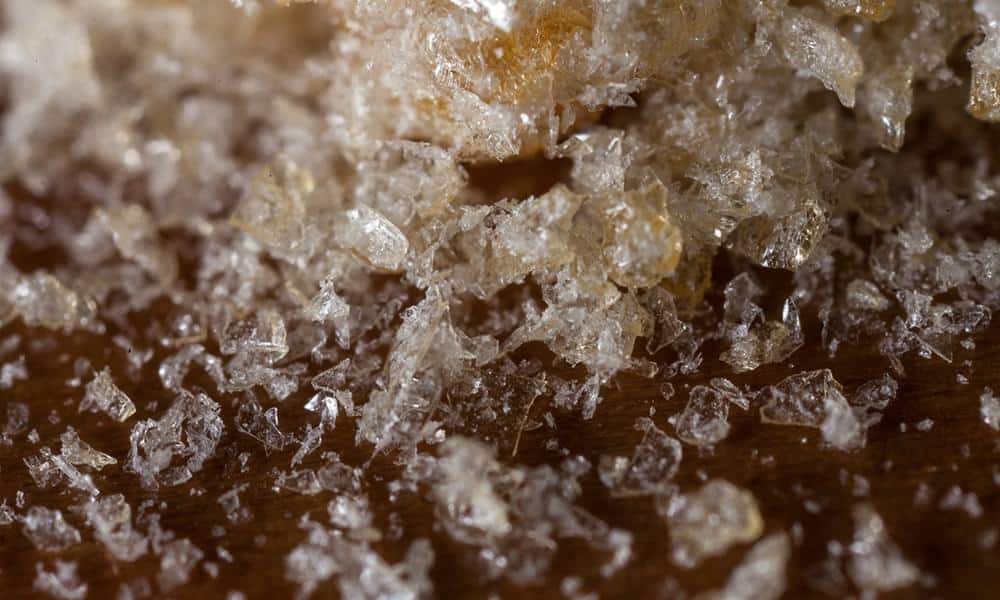Blog
Hash to Honey Oil: Tracing the Evolution of Cannabis Concentrates
Cannabis concentrates have come a long way, evolving from traditional forms like hash to modern extracts like honey oil. These concentrated forms of cannabis offer a potent and versatile experience, with increased levels of cannabinoids and terpenes. In this article, we will embark on a journey through time, tracing the fascinating evolution of cannabis concentrates. Join us as we explore the historical roots, extraction methods, popular forms, and the impact of this evolution on the cannabis industry and consumer experience.
A Timeless Tradition: Exploring the Origins of Hashish
Hashish, a timeless cannabis concentrate, holds a remarkable historical significance that spans centuries. Its origins can be traced back to ancient cultures where it was highly valued for its potent effects and therapeutic properties. Delving into the roots of hashish reveals a rich tapestry of cultural traditions and practices. Traditional extraction methods employed to produce hashish involved meticulous techniques passed down through generations. Hand-rolling techniques, such as the charas method in India, involved gently rubbing fresh cannabis flowers between the palms to collect the resinous trichomes. Similarly, sieving methods, like the Moroccan technique, involved sifting dried cannabis buds over fine screens to separate the resin glands. These ancient practices not only played a pivotal role in the history of cannabis but also shaped the foundation of modern cannabis concentrates. By exploring the origins of hashish, we can gain a deeper appreciation for the cultural significance and craftsmanship that has contributed to the enduring allure of this venerable concentrate.
The Rise of Extraction Techniques: From BHO to CO2
As extraction technology advanced, a new era dawned in the world of cannabis concentrates. The rise of extraction techniques such as Butane Hash Oil (BHO) and Carbon Dioxide (CO2) extraction revolutionized the production of highly potent and concentrated cannabis products. Butane Hash Oil (BHO) extraction involves using butane as a solvent to strip cannabinoids, terpenes, and other desirable compounds from the cannabis plant material. This method allows for the extraction of a wide range of cannabinoids, resulting in potent concentrates like shatter, wax, and budder. On the other hand, Carbon Dioxide (CO2) extraction employs supercritical CO2 to extract cannabinoids and terpenes from the plant material. The use of CO2 as a solvent offers a cleaner and safer extraction process, producing high-quality concentrates with precise control over cannabinoid profiles. Both techniques have their unique advantages, and understanding their differences helps consumers and industry professionals appreciate the diverse array of cannabis concentrates available. These extraction techniques have propelled the industry forward, enabling the production of concentrated cannabis products that deliver potent effects and a broad spectrum of cannabinoids and terpenes. With continued advancements in extraction technology, the future holds even more exciting possibilities for the production of high-quality and diverse cannabis concentrates.
Modern Forms of Cannabis Concentrates
As the evolution of cannabis concentrates continues, modern forms such as shatter, wax, budder, and more have gained popularity among cannabis enthusiasts. These concentrates offer unique textures, consistencies, and cannabinoid profiles, providing consumers with a diverse range of options to explore and enjoy. Shatter, for example, is known for its glass-like appearance and brittle consistency, which breaks into small, translucent pieces when handled. It typically contains high levels of THC and delivers a potent and fast-acting experience. Wax, on the other hand, has a softer, malleable texture that resembles beeswax or earwax, hence its name. It is often rich in cannabinoids and terpenes, offering a flavorful and aromatic experience. Budder, with its creamy and buttery texture, is created through a whipping process during extraction, resulting in a smooth and spreadable concentrate. Each of these forms undergoes specific production processes, such as using solvents like butane or CO2 to extract cannabinoids and terpenes from the cannabis plant. The resulting concentrates have different consistencies, making them suitable for various consumption methods, including dabbing, vaporization, and incorporation into edibles. By understanding the characteristics and production processes that distinguish these modern forms of cannabis concentrates, consumers can make informed choices and discover the concentrates that best align with their preferences and desired experiences.
Innovations and Beyond The Future of Cannabis Concentrates
The future of cannabis concentrates is filled with exciting possibilities as innovation continues to drive the industry forward. Advancements in extraction techniques are revolutionizing the way concentrates are produced, resulting in products with enhanced purity and potency. Novel product formulations are emerging, offering consumers a diverse range of options that cater to different preferences and desired effects. Additionally, the integration of cutting-edge technologies is transforming the way cannabis concentrates are consumed, with advancements in vaporization devices, dab rigs, and other consumption methods. These innovations are not only expanding the possibilities for consumer experience but also opening doors for potential therapeutic applications. Researchers are exploring the therapeutic potential of cannabis concentrates in addressing a variety of health conditions, ranging from chronic pain and inflammation to neurological disorders and mental health conditions. The future of cannabis concentrates holds immense promise, with continued advancements and research paving the way for new and improved products that cater to the evolving needs and preferences of consumers. As the industry continues to push boundaries and embrace innovation, we can anticipate a future where cannabis concentrates play a vital role in both recreational enjoyment and therapeutic applications, shaping the way we experience and benefit from the incredible potential of the cannabis plant.
The Evolution and Future of Potent Delights
The journey from hash to honey oil represents a remarkable evolution in the world of cannabis concentrates. From ancient traditions to modern extraction techniques, cannabis concentrates have come a long way, offering consumers potent and versatile products. As technology and innovation continue to drive the industry forward, the future of cannabis concentrates holds immense potential. The ongoing evolution of extraction methods, product forms, and the integration of novel technologies will undoubtedly shape the landscape of cannabis concentrates. Whether you prefer the traditional roots of hash or the sleek allure of honey oil, one thing is certain – cannabis concentrates are here to stay, catering to the evolving tastes and preferences of cannabis enthusiasts worldwide.


